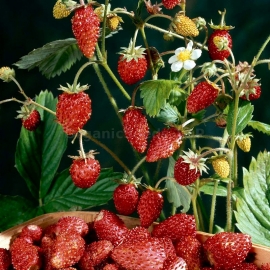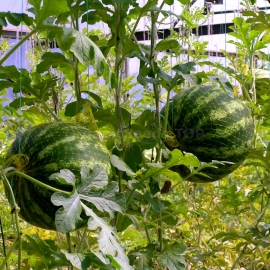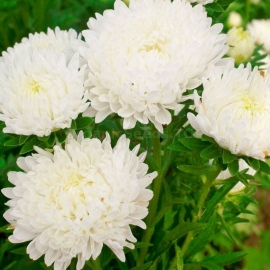
«Snow Green» - Organic Pea Seeds
1.14 €
Snow Green is a fantastic variety that produces high numbers of long thin stringless mange-tout pods with good tolerance to hot weather. It is perfect steamed or eaten straight from the plant.
-
Heirloom Pea «Snow Green»
Snow Green is a fantastic variety that produces high numbers of long thin stringless mange-tout pods with good tolerance to hot weather. It is perfect steamed or eaten straight from the plant. This is the variety that you will find on the supermarket shelf, only grown much closer to home.How to Grow
For best results peas need an open, sunny position with good drainage. Never sow in cold, wet soil; acidic soils should be limed. If spring is slow to arrive, warm the soil with polythene before sowing and then protect seedlings with horticultural fleece. Generally, peas prefer cooler weather and grow well in cool springs.
Make a flat-bottomed trench 5cm (2in) deep and 15cm (6in) wide – a draw hoe is ideal for this. Sow the seeds evenly in the trench approximately 7.5cm (3in) apart, cover with soil, then lightly firm. If you need a second row make this the height of the crop away from the first trench.
Make a single sowing of an early, second early and maincrop variety. First earlies are sown from March to early June and will be ready to pick in 11 to 13 weeks. Second earlies are sown from March to June and are ready in around 14 weeks. Maincrop cultivars are sown at the same time and take up to 16 weeks.
Peas may also be sown in lengths of guttering to germinate indoors for a head start in February or March. Peas are grouped by harvesting time and the shape of the seeds; round peas tend to be hardier than wrinkled varieties. Water well when the flowering begins and two weeks after. Add a mulch around the base of plants to preserve soil moisture.
Apart from dwarf cultivars, you will need to provide some support for the plants to scramble up. One of the easiest way of supporting taller varieties is adding trellis, bamboo canes and netting. Dwarf varieties can be supported with pea netting or pea sticks (twiggy branches).
After flowering, plants need sufficient water for the pods to swell properly. Check the soil moisture at root level to find out if the plants are getting enough water.
Products Viewed Before
Product code: 11656
1.14 €
A new Indigo tomato high in anthocyanins. Very productive. An accidental cross between Blue Gold and an unknown Indigo tomato. Indeterminate plants have good disease resistance and are productive even in low temperatures.
Product code: 9920
1.14 €
The wood alpine strawberry produces masses of dainty, sweet tasting berries from July to September. The small fruits have a delicate flavour with an almond undertone making them perfect for decorating pastries and cakes.
Product code: 12063
1.14 €
Prince is another classic watermelon variety that features sweet and juicy flesh, and an attractive striated rind. Prince also tends to produce heavy yields of watermelons weighing in the 3-5kg range. A round variety.
Product code: 15444
1.14 €
The variety type is peony-shaped, the plant is medium-sized, columnar in shape, on the plant there are 9-12 hemispherical inflorescences, consisting of wide reed flowers, directed upwards and bent inward, white in color.




